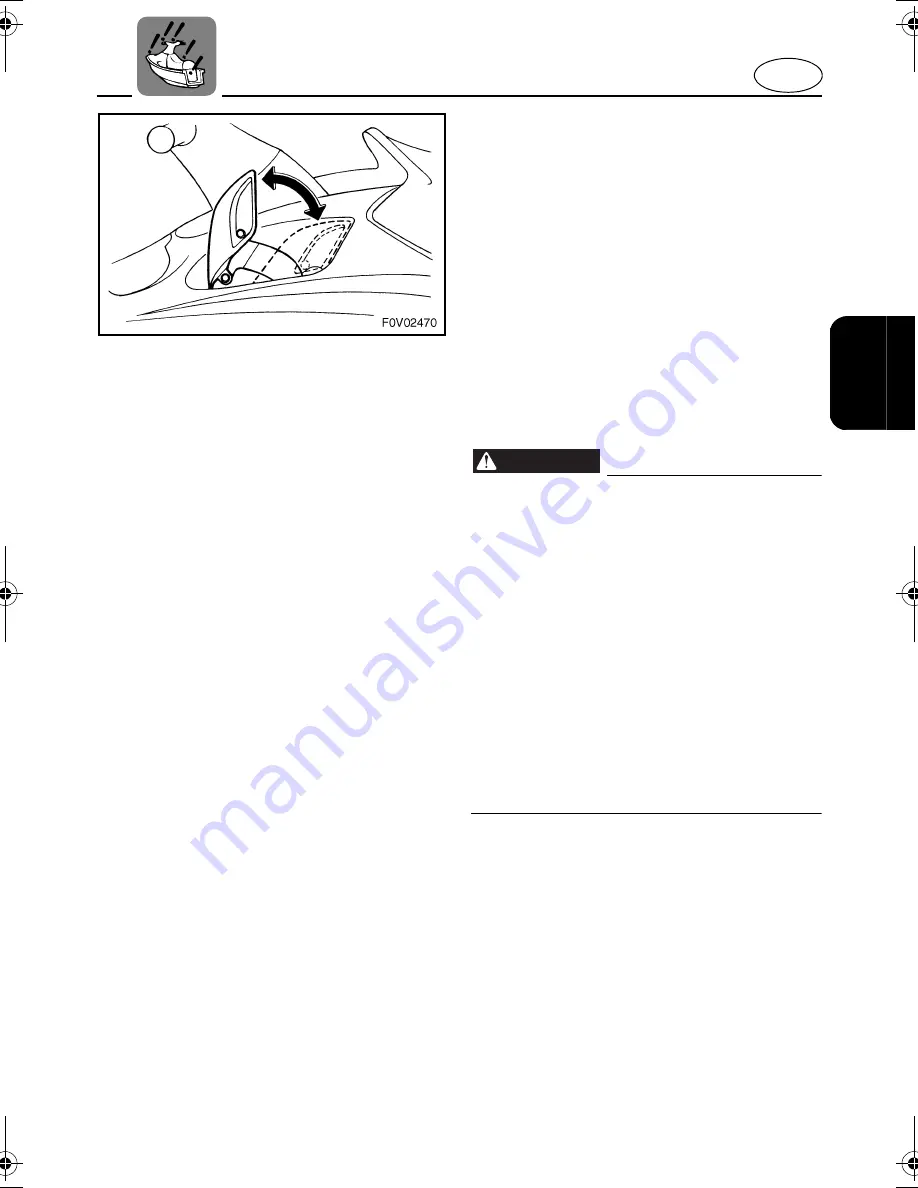
2-14
E
EJU01877
Shift lever
The shift lever is located on the starboard
(right) side of the watercraft and is used to
control the reverse gate, which allows the
watercraft to move into reverse or forward.
When in the reverse position, the water-
craft can be launched from a trailer, or
backed up out of tight spots where you can-
not turn around easily.
To shift into reverse:
1. Release the throttle, and then let the
engine speed return to idle.
2. Pull the shift lever toward you.
WARNING
@
●
Make sure that the throttle is com-
pletely released and that the engine is
at idle before shifting into reverse.
●
Do not use the reverse function to
slow down or stop the watercraft as it
could cause you to lose control, be
ejected, or impact the handlebars.
●
Use reverse for slow-speed maneuver-
ing only.
●
Make sure that there are no obstacles
or people behind you before shifting
into reverse.
●
Do not touch the reverse gate while the
shift lever is being operated, otherwise
you could be pinched.
@
To shift into forward:
1. Release the throttle, and then let the
engine speed return to idle.
2. Push the shift lever away from you.
UF0V14.book Page 14 Thursday, July 8, 2004 11:35 AM
Summary of Contents for XLT1200 WaveRunner 2005
Page 1: ...2005 WaveRunner XLT1200 OWNER S OPERATOR S MANUAL ...
Page 2: ......
Page 8: ...1 3 E EJU00998 Important labels EJU01351 Label location ...
Page 9: ...1 4 E EJU01352 Warning labels 1 2 3 4 ...
Page 10: ...1 5 E EJU01354 Other labels 7 8 5 6 9 0 ...
Page 11: ...1 6 E A B D E C F ...
Page 129: ...E 6 EJU01124 APPENDIX Limited warranty 6 1 YAMAHA EXTENDED SERVICE Y E S 6 3 Index 6 4 ...
Page 136: ......
















































